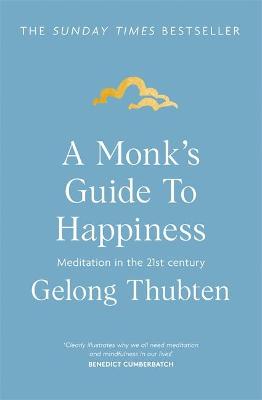
You can practice mindfulness mediation as many times as you wish. It is recommended to start with only a few minutes each day, and you can increase that time as you become more comfortable. It is best to establish a timer and to stick to it. Beginners can do a 15-minute session each day. You can eventually work up to an entire hour per day once you become more comfortable with it. Britt Gustafson (VIVAYA teacher) recommends starting your day with five to ten minute of mindfulness.
If you are practicing a daily mindfulness meditation practice, you can use it as a springboard for everyday life. For example, when your child is squirming in the bathtub, try to focus on their eyes instead of your mouth. You can also relax while snuggling with your spouse/significant others. You'll be amazed at how many times you feel happier and less stressed. You can even unleash your creative side by practicing and you will start to see the bigger picture.

Mindfulness is a form of meditation that has numerous benefits for the body. It can lower stress levels, according to studies. Chronic stress can lead in many ways to depression and cardiovascular disease. You can lower your stress level and reduce the risk of developing illness. You can find the perfect mindfulness program. You can find many benefits of practicing mindfulness, which will help you live a more balanced life.
Awareness of your breath is the first step to mindfulness. Notice how your belly rises/falls with each inhale and exhale. You can also observe how your stomach temperature changes with each inhale or exhale. Your thoughts can have an impact on the lives of others. You should be aware of the way that you feel and the way you speak to them. This is the first step in learning how to meditate effectively. Download free mindfulness exercises to learn more.
You can download guided meditations free of charge. Listen to a short recording to get started if time is tight. A longer meditation track will give you a better experience. These meditation tracks are usually available for download and can be found in various lengths. These meditation tracks can be used whenever you like. It is easy to understand and can have a positive impact on your health.

Mindfulness meditation is a practice that is increasingly popular in psychotherapy and other forms of psychotherapy. It allows people to gain perspective on their thoughts and feelings. It also improves concentration. It is beneficial to people with anxiety and depression. You can improve your focus and decrease stress levels by practicing mindfulness. You'll find it easier to stay present and make the world better. This skill is very helpful and will allow you to control your thoughts.
FAQ
What is the most healthful lifestyle?
Living a healthy lifestyle is one that encourages you to eat well, exercise regularly, get enough sleep, and avoids stress. These guidelines will help you live a long, healthy life.
Start small by changing your diet and exercising routine. If you're looking to lose weight, walk for 30 minutes each morning. If you're looking for a way to increase your activity, consider taking up swimming or dancing. A Fitbit or Strava online program that tracks your activity can be joined.
What can you do if your immune system is weak?
The human body is made up of trillions and trillions of cells. These cells work together to form organs and tissues that perform specific functions. Another cell takes its place when a cell dies. Chemical signals, called hormones, allow cells to communicate with each other. All bodily processes are controlled by hormones, including metabolism and immunity.
Hormones, chemicals that are secreted throughout the body by glands, are chemicals. They travel through our bloodstream and act as messengers, controlling how our bodies function. Some hormones are produced within the body while others are externally manufactured.
The hormone-producing glands release their contents into bloodstream. This is when hormone production starts. Once hormones are released, they move through the body to reach their target organ. In some cases hormones can remain active for only a few hours. Some hormones remain active for longer periods of time and can continue to have an impact on the body's function long after they are gone.
Some hormones are made in large quantities. Others are made in small quantities.
Some hormones are only produced at certain times in your life. For instance, estrogen is produced during puberty, pregnancy, menopause, and old age. Estrogen assists women with breast development, bone density, and osteoporosis prevention. It promotes hair growth as well as keeping skin soft and smooth.
These are 5 ways you can live a healthy and happy life.
Living a healthy lifestyle involves eating right and exercising regularly. Good eating habits include avoiding processed foods, sugar, unhealthy fats, and avoiding junk food. Exercise is good for your body and muscles. Sleeping enough is good for memory and concentration. Stress management is a way to reduce anxiety levels and depression. Fun is the key to keeping us healthy and happy.
How does an antibiotic work?
Antibiotics are drugs which destroy harmful bacteria. Antibiotics are used for treating bacterial infections. There are many different types of antibiotics. Some can be taken orally while others are injected. Others are topically applied.
People who have been exposed may be prescribed antibiotics. For example, if someone has had chicken pox, he or she might take an oral antibiotic to prevent shingles later on. Or, if someone has had strep throat, he or she might receive an injection of penicillin to help prevent pneumonia.
If antibiotics are to be administered to children, they must be prescribed by a doctor. Children are at greater risk of developing side effects from antibiotics than adults.
Diarrhea, the most common side-effect of antibiotics, is probably diarrhea. Other possible side effects include diarrhea, nausea and vomiting, allergy reactions, dizziness, dizziness, stomach cramps, nausea, vomiting or allergic reactions. These side effects are usually gone once the treatment is complete.
Why does our weight change as we get older?
How do I know if my bodyweight changes?
A person who has less body fat than their muscle mass will experience weight loss. This means that you must consume more calories than you use daily. The most common cause of weight loss is decreased activity levels. Others include pregnancy, hormonal imbalances or certain medications. Weight gain is when there are more calories than muscle mass. It occurs when people eat more calories than what they use in a given day. Overeating, increased physical activity and hormonal changes are all common reasons.
The main reason why our bodies lose weight is because we consume fewer calories than we burn. Regular exercise increases metabolism, which means that we burn more calories per day. This doesn't necessarily mean we will lose weight. What matters is whether we are losing fat or building muscle. We will lose weight if we burn more calories than we consume. But if you consume more calories than you burn, you're actually storing them for fat.
As we age we tend to be slower in moving and thus we don't move nearly as much. We also tend eat less than we used to. Therefore, we tend to put on weight. On the flip side, we tend to have more muscle mass so we look bigger than we really are.
There's no way to tell how much weight you've lost unless you weigh yourself every week. There are many options for measuring your weight. You can gauge your waist size, hips, hips, thighs and arms. Some people prefer to use bathroom scales while others like to use tape measures.
For a better track of your progress, try to weigh yourself once per week and measure your waistline once every month. You can also take pictures of yourself every few months to see how far you've come.
You can also look up your height, weight and body measurements online to determine how much you weigh. If you are 5'10" tall, and you weigh 180 lbs, then you would probably weigh 180 lbs.
What are 7 tips for a healthy and happy life?
-
You should eat right
-
Exercise regularly
-
Rest well
-
Drink plenty of water.
-
Get adequate rest
-
Be happy
-
Smile often
Statistics
- According to the 2020 Dietary Guidelines for Americans, a balanced diet high in fruits and vegetables, lean protein, low-fat dairy and whole grains is needed for optimal energy. (mayoclinichealthsystem.org)
- nutrients.[17]X Research sourceWhole grains to try include: 100% whole wheat pasta and bread, brown rice, whole grain oats, farro, millet, quinoa, and barley. (wikihow.com)
- According to the Physical Activity Guidelines for Americans, we should strive for at least 150 minutes of moderate intensity activity each week (54Trusted Source Smoking, harmful use of drugs, and alcohol abuse can all seriously negatively affect your health. (healthline.com)
- The Dietary Guidelines for Americans recommend keeping added sugar intake below 10% of your daily calorie intake, while the World Health Organization recommends slashing added sugars to 5% or less of your daily calories for optimal health (59Trusted (healthline.com)
External Links
How To
What does the word "vitamin" mean?
Vitamins are organic compounds that can be found in foods. Vitamins help us absorb nutrients from foods we eat. Vitamins are not made by the body, so they must be obtained through food.
There are two types: water-soluble and fat-soluble vitamins. Water-soluble vitamins dissolve quickly in water. Some examples include vitamin C,B1 and B2 vitamins (thiamine), B2 and riboflavin, B3 and B6 vitamins (niacin), folic acids, biotin, pantothenic acids, and cholesterol. Fat-soluble vitamins can be stored in the liver or in fatty tissue. Some examples include vitamin D and E, K, A and beta carotene.
Vitamins can be classified according to biological activity. There are eight major vitamin groups:
-
A - vital for healthy growth.
-
C - essential for nerve function and energy generation.
-
D - Vital for healthy bones and teeth
-
E - Required for good vision & reproduction
-
K - required for healthy muscles and nerves.
-
P – vital for building strong bones.
-
Q – aids digestion of iron and iron absorption
-
R - Required for red blood cell production
The recommended daily allowance of vitamins (RDA), varies according to age, gender, physical condition, and other factors. The U.S. Food and Drug Administration sets RDA values.
For example, the RDA for vitamin A is 400 micrograms per dayfor adults 19 years or older. Pregnant mothers need 600 micrograms per days because it is vital for the development and growth of their baby. Children ages 1-8 require 900 micrograms per day. For infants younger than one year, 700 micrograms are required daily. However, this number drops to 500 micrograms each day for children aged 9-12 months.
Children ages 1-18years who are obese need 800 micrograms per day while those who are overweight need 1000 micrograms per day and children who are underweight need 1200 micrograms per day to meet their nutritional needs.
Children 4-8 years old who have anemia must consume 2200 micrograms of Vitamin C daily.
2000 micrograms daily is required for adults over 50 to maintain their general health. Women who are pregnant or breastfeeding need 3000 micrograms per day due to increased nutrient requirements.
1500 micrograms are required daily by adults over 70 because they lose approximately 10% of their muscle each decade.
Women who are pregnant, nursing or breastfeeding need more than the RDA. Pregnant woman need 4000 micrograms daily in pregnancy, and 2500 per day after childbirth. Breastfeeding mothers need 5000 micrograms per day when breast milk is being produced.